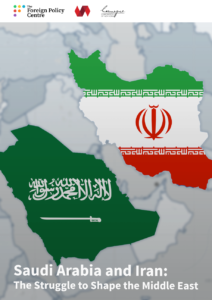 The Iran-Saudi rivalry, which, since 2011, has dominated the Middle East and pervaded its wars, can be interpreted in geopolitical and sectarian terms, notes Katerina Dalacoura, associate professor of international relations at the London School of Economics. But these interpretations must be complemented by a third: the ideological clash between two models of Islamism, one top-down and the other bottom-up, she writes for The Financial Times:
The Iran-Saudi rivalry, which, since 2011, has dominated the Middle East and pervaded its wars, can be interpreted in geopolitical and sectarian terms, notes Katerina Dalacoura, associate professor of international relations at the London School of Economics. But these interpretations must be complemented by a third: the ideological clash between two models of Islamism, one top-down and the other bottom-up, she writes for The Financial Times:
- The top-down model is associated with Saudi Arabia, a state run according to a pact between the Saudi monarchy and the Wahhabi clerical establishment since its inception in 1932, and even before, in the proto-states that preceded it. Saudi Arabian politics and society are infused with religion but it is an Islamism controlled by the regime, which sets the tone and determines the religious content of political institutions, legal precepts and social mores.
- The Saudi model is challenged by a bottom-up Islamism powered by mass mobilisation, which comes in a variety of guises. In 1979, the Iranian Revolution quickly took an Islamist turn and attacked the Saudi Wahhabi ideology. Another variant of the bottom-up model is employed by the Saudi regime’s other adversary, the Muslim Brotherhood, which sees the reformed individual as the stepping stone for the construction of an Islamist society and an Islamic state.
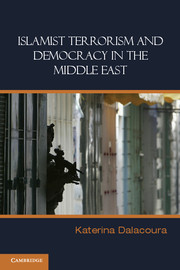 Rival proponents of Islamist ideologies will continue to fight it out but neither side is inherently more favorable to the values of freedom, tolerance and accountability the region badly needs, adds Dalacoura, author of Islam, Liberalism and Human Rights: Implications for International Relations (I. B. Tauris, 2007), Islamist Terrorism and Democracy in the Middle East (Cambridge University Press, 2011).
Rival proponents of Islamist ideologies will continue to fight it out but neither side is inherently more favorable to the values of freedom, tolerance and accountability the region badly needs, adds Dalacoura, author of Islam, Liberalism and Human Rights: Implications for International Relations (I. B. Tauris, 2007), Islamist Terrorism and Democracy in the Middle East (Cambridge University Press, 2011).
A U.S. effort to enlist Europe in its pressure campaign against Iran faced a setback after officials said ministers from several European Union members will likely skip a summit organized by Washington on Iran and the Middle East, The Wall Street Journal reports.
The U.S. has articulated a strategy to counter Iran’s “malign activities” and its
behavior more broadly, based on pressuring Iran economically through sanctions [and] …arguing that the JCPOA-related sanctions relief enhanced Iran’s ability to exert influence in the region, notes a new report from the Congressional Research Service on Iran’s Foreign and Defense Policies. However, many experts argue that Iran’s expanded regional influence is due more to opportunities provided by the region’s conflicts than to an increase in Iran’s financial resources, it adds.
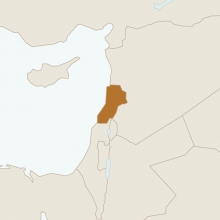
NDI
Lebanon is increasingly viewed within the prism of containing Iranian influence, mainly as an arena to push back on Iran’s key nonstate ally Hezbollah. But turning Lebanon into a new front against Iran would be a mistake, argues RAND analyst Dalia Dassa Kaye. Instead, American policymakers would be wise to engage Lebanon on its own terms, she writes:
That is, as an important American partner and a rare example of a Middle East country with religious coexistence and a functioning democracy, albeit with the flaws and deadlocks inherent in a confessional political system. Yes, Hezbollah is a destabilizing influence within Lebanon and the region, but the best way to marginalize and weaken Hezbollah may be to help Lebanon succeed as a state, not to reduce Lebanon into a proxy front in a confrontation with Iran.
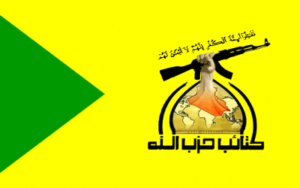 To achieve its goal of a “land bridge” from Tehran to the Mediterranean. To achieve that goal, Iran seeks to control three Arab countries: Iraq, Syria and Lebanon. To help understand how the Iranian strategy works, it is helpful to take a closer look at the role of one key Iraqi militia that is loyal to Iran: Kata’ib Hezbollah, adds analyst Bob Feferman:
To achieve its goal of a “land bridge” from Tehran to the Mediterranean. To achieve that goal, Iran seeks to control three Arab countries: Iraq, Syria and Lebanon. To help understand how the Iranian strategy works, it is helpful to take a closer look at the role of one key Iraqi militia that is loyal to Iran: Kata’ib Hezbollah, adds analyst Bob Feferman:
While there are several Iraqi Shiite militias, there is no doubt that the most dangerous and notorious of these is Kata’ib Hezbollah or “KH”. Founded by Iran’s Islamic Revolutionary Guard Corps (IRGC), KH receives funding from Iran and its members receive training both in Iran and from Lebanese Hezbollah.
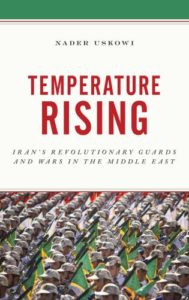 Whether or not recent mass demonstrations in Iran will spread, whether a second revolution is imminent or not, the numbers for the ayatollah empire just don’t add up. A breakdown is materially inevitable, analyst Edward Luttwak writes for Tablet magazine:
Whether or not recent mass demonstrations in Iran will spread, whether a second revolution is imminent or not, the numbers for the ayatollah empire just don’t add up. A breakdown is materially inevitable, analyst Edward Luttwak writes for Tablet magazine:
With some 80 million people, and with oil accounting for 80 percent of its exports, Iran would need to export some 25 million barrels a day to make a go of it, but it can barely export 2.5 million. That would be luxuriously ample for the likes of Abu Dhabi with fewer than 800,000 citizens, but it is a miserable pittance for Iran, with a population more than 100 times as large. Iran cannot even match the $6,000 income per capita of Botswana.
Even without the sharp drop in revenues, Iran did not have the economic means to finance its support for the Assad regime and Hezbollah—the main recipients of Iran’s largesse—estimated to cost Iran several billion dollars a year, argues Karim Pakravan, adjunct professor in the Department of Economics at DePaul University. Moreover, this support is highly unpopular at home. Nevertheless, backing Assad and Hezbollah are key elements in the regional strategy of regime hardliners. With the U.S. withdrawal from Syria, Iran might be tempted to try to extend its influence. But this will become increasingly costly, with diminishing returns, at a time when Iran’s domestic economic woes are reaching a boiling point, he tells Carnegie’s Michael Young.
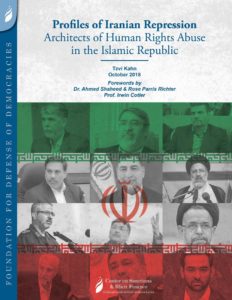 Iran’s support of militias is “a tricky model of expansion to counter,” said Michael Knights, a senior fellow at the Washington Institute for Near East Policy. Up to now, the United States had taken a calibrated and piecemeal approach to opposing the Iranian militias, and it should continue with that method.
Iran’s support of militias is “a tricky model of expansion to counter,” said Michael Knights, a senior fellow at the Washington Institute for Near East Policy. Up to now, the United States had taken a calibrated and piecemeal approach to opposing the Iranian militias, and it should continue with that method.
Iran’s ambitions in the Middle East include financing Iraqi militias and Hezbollah in Lebanon, supporting the Assad regime in Syria, and helping the Houthis in Yemen. At the same time, Iran is arming the various branches of its own large military and security forces. All these efforts have cost tens of billions of dollars. However, Iran’s income, which depends on oil and gas, is down, notes Jean-François Seznec, a scholar at the Middle East Institute in Washington, D.C. and adjunct professor at the Johns Hopkins School of Advanced International Studies







